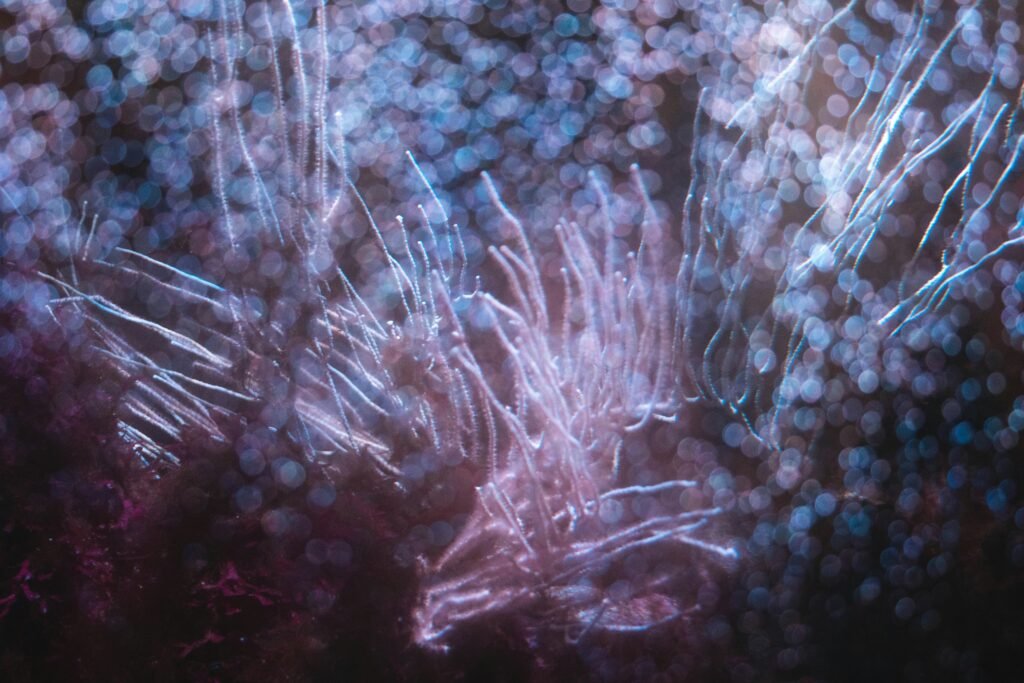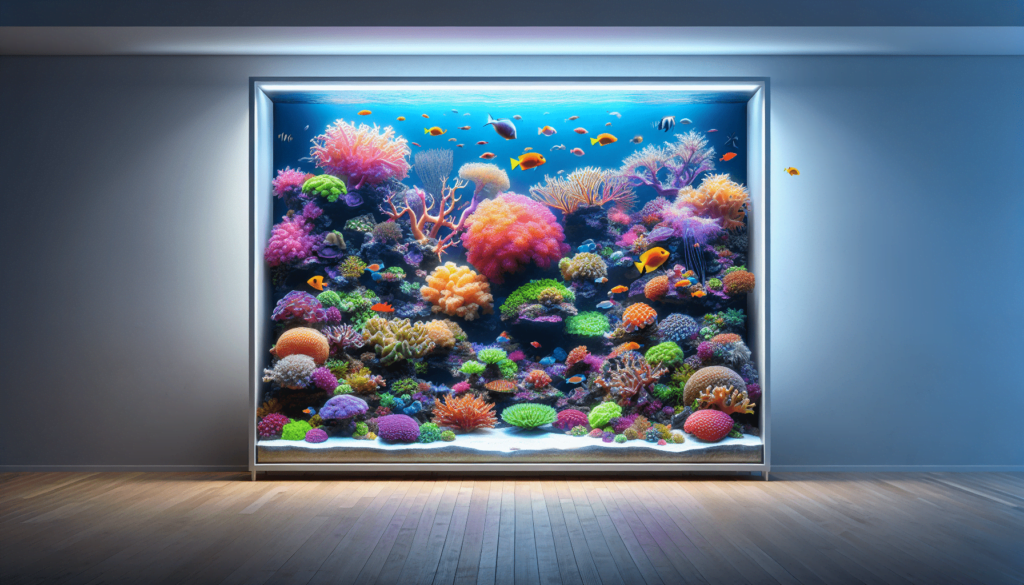In the magical world of oceans, there’s a special hobby called aquascaping that lets you create tiny underwater worlds in your own home. “Mastering Aquascaping: The Art of reef aquariums” is like a treasure map for kids and grown-ups who want to learn how to build beautiful and colorful reef aquariums. Long ago, people started making small ocean replicas at home, and today, it’s a popular way to bring the wonders of the sea into your living room. From picking the perfect rocks to choosing vibrant corals and fish, you’ll discover the secrets to making your very own underwater paradise. Dive in and explore a fascinating hobby that connects you with the beauty and mystery of the ocean! Have you ever wondered what it would be like to have a little piece of the ocean right inside your home? Let’s dive into the amazing world of reef aquariums and learn how you can master the art of aquascaping!

Overview
Creating a reef aquarium might seem like having an alien world in a glass box, but it’s actually an exciting and beautiful activity. Reef aquariums are a way to keep live corals, exotic fish, and other sea creatures right in your living room. They are not only mesmerizing, but they can also teach you a lot about marine life.
The Art of Aquascaping: What Is It?
Aquascaping is like gardening, but underwater. Just like how you arrange plants and flowers in your garden, aquascaping is about arranging rocks, plants, and corals in your aquarium to make it look stunning. The main goal is to create a beautiful and healthy environment for the creatures living inside.
Historical Context
Where Did It All Begin?
The idea of keeping fish in tanks goes back hundreds of years. Ancient Romans and Chinese were among the first to keep ornamental fish in glass containers. However, reef aquariums as we know them started becoming popular in the 20th century, thanks to technology and a better understanding of marine life.
How Aquariums Became Popular
Initially, people kept freshwater fish because it was easier. But as technology improved, it became possible to maintain saltwater tanks, which could house more colorful and exotic fish. By the 1970s, keeping reef aquariums became a hobby for many people around the world.
Current Trends in Reef Aquariums
Technological Advancements
With new technology, it’s easier than ever to keep a reef aquarium. Devices like automatic feeders, advanced filtration systems, and LED lighting can help you maintain the perfect environment for your marine creatures.
Eco-Friendly Practices
Many aquarists are now focusing on sustainability. They opt for eco-friendly practices like captive-breeding of fish and coral farming, which can help protect natural reefs from being overharvested.

Key Concepts and Definitions
What Is a Reef Aquarium?
A reef aquarium is a type of marine aquarium that houses live corals and other marine life like fish, crustaceans, and smaller invertebrates.
What Is a Coral?
Corals are tiny animals that live in colonies. They have hard skeletons made of calcium carbonate and form the structure of coral reefs.
What Is Filtration?
Filtration is the process of removing waste and toxins from the water to keep it clean and healthy for the aquarium inhabitants.
Detailed Exploration
Why Aquascaping Is Important
Aquascaping not only makes your tank look beautiful, but it also provides a suitable habitat for your marine creatures. Proper rockwork and coral placement can offer hiding spots for fish and allow corals to grow in a natural, healthy manner.
Different Styles of Aquascaping
There are various styles you can choose from:
- Nature Style: Mimics natural underwater landscapes.
- Dutch Style: Focuses on plant arrangement and dense plant growth.
- Iwagumi: Uses rocks as the main feature, creating a tranquil, minimalist look.
Step-by-Step Guide to Start Aquascaping
Here’s a simple guide to help you get started:
- Choose the Right Tank: Start with a medium-sized tank about 20 to 30 gallons.
- Set Up the Filtration and Lighting: Install a good filtration system and LED lighting.
- Arrange Your Rocks: Place your live rocks in a balanced way.
- Add Substrate: Use a reef-specific substrate rich in minerals.
- Introduce Corals and Fish Slowly: Add your corals first, then your fish.
- Maintain: Regularly check the water, clean filters, and feed your fish.
Example 1: The Zen Tank
Imagine setting up a small reef aquarium with just a few rocks, some sand, and a couple of corals. This minimalist approach is inspired by the Iwagumi style and is perfect for small rooms. A Zen tank is low-maintenance and provides a calming atmosphere.
Example 2: The Coral Garden
Now, think about a larger tank that looks like an underwater garden. Filled with various types of corals, from soft to hard, and a few colorful fish, this type of aquascaping is more complex but incredibly rewarding. It requires regular upkeep, but the visual payoff is immense.

Comparison of Different Perspectives
Pros and Cons of Freshwater vs. Reef Aquariums
| Factors | Freshwater Aquariums | Reef Aquariums |
|---|---|---|
| Ease of Care | Generally easier and low maintenance | Requires more attention and equipment |
| Cost | More affordable | Can be expensive due to specialized gear |
| Variety | Limited to freshwater species | Wide variety of exotic marine life |
| Visual Appeal | Beautiful but more subdued | Extremely colorful and visually dynamic |
Short-Term vs. Long-Term Costs
While setting up a reef aquarium can be costly, especially at the beginning, the long-term rewards are well worth it. However, regular maintenance can involve both time and money. Freshwater tanks might be cheaper initially but offer less variety and visual excitement.
Impact Assessment
Benefits of Reef Aquariums
Reef aquariums can provide numerous benefits:
- Educational Value: They teach you about marine ecosystems.
- Stress Relief: Observing the tank can be incredibly relaxing.
- Aesthetic Appeal: A well-maintained tank is a beautiful addition to any room.
Environmental Concerns
While there’s joy in keeping these habitats, it’s important to consider the environmental impact. Overfishing and coral harvesting can harm natural reefs. Choosing sustainably-sourced fish and corals can help mitigate these issues.

Future Directions and Implications
Predictions for the Future
As technology continues to advance, reef aquariums are likely to become even easier to maintain. Innovations in filtration, lighting, and eco-friendly materials will make it possible for more people to keep reef tanks at home.
Broader Implications
The popularity of reef aquariums carries significant educational and environmental benefits. Increased awareness about marine life can lead to greater conservation efforts. Schools and public facilities incorporating reef aquariums can play a role in environmental education.
Conclusion
Recap
We’ve explored how aquascaping and reef aquariums bring a piece of the ocean into your home. From understanding the history and current trends to learning how technology is making this hobby accessible, reef aquariums offer endless possibilities for creativity and learning.
Final Thought
Next time you look at a colorful fish tank, think about the fascinating world it represents. What will you put in your own reef aquarium to make it unique?
Engagement
Feel free to share your thoughts or ask questions in the comments. If you’re excited to learn more, there are plenty of resources available to help you dive deeper into the world of aquascaping and reef aquariums.

Credible Sources
- Reef Maintenance Guide
- Aquascaping Techniques
- Smith, J. A. (2020). Marine Aquariums: A Practical Guide. Coral Publishing.
- Sustainable Aquarium Practices
- Doe, J. (2018). The Art of Reef Aquascaping. Ocean Wonders Press.



